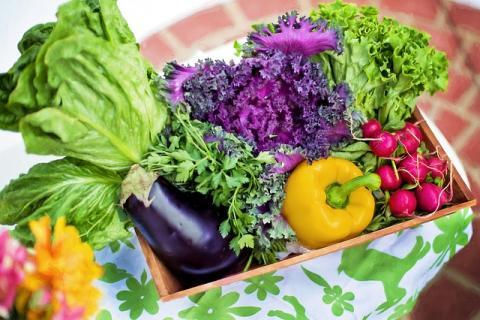
Looking to better your kitchen garden’s produce? Try rotating your crops season to season, year to year…
A rookie but oft-repeated mistake that many kitchen garden enthusiasts make is planting the same crops, in the same patch, over and over again –wondering why the tomatoes weren’t as nice as before and why the pumpkin patch refuses to yield The Great Pumpkin like it once did.
The problem is that despite all the fertilizers that we feed the soil with and all the tender loving care we show it by composting can still leave the soil unbalanced. Think of it this way – plants and soil have a symbiotic relationship of sorts. While the plants take in their food from the soil, they also make it rich in certain nutrients. If we plant the same crop in the same soil patch repeatedly, the soil gets depleted in certain nutrients and overtly rich in others. This is where crop rotation steps in – alternating a patch of soil with at least two if not more crops in a year means that you restore the soil balance. The trick is to know which crops can successfully be rotated and how…
The thing is, crop rotation isn’t a new fad – it’s a very old time-tested method for successful agriculture. And sometimes, old really is gold. Crop rotation makes the soil robust and better suited to fighting pests and diseases, thereby making each crop healthier and with better produce.
Steps To Successful Crop Rotation
Identify and classify the crops you plant into five groups. Legumes (peas, beans), root crops (onions, radish, turnips, beets, carrots, garlic), vegetable/fruit crops (peppers, eggplants, melons, tomatoes, squash, gourds, cucumbers), leafy crops (spinach, lettuce, fenugreek, herbs, cabbage) and cereal grasses (wheat, rye, corn).
A simple way to rotate crops is to rotate these four groups clockwise. Each time you plant any of these, shift them one spot to the right of last year’s patch. It’s actually better to leave a bed fallow (bare) for a season than to keep trying to plant the same crop in it repeatedly.
Some Basic Rules
If your garden is too large or too small to follow this method successfully and/or if you’re a bit of an absent-minded gardener, then follow these crop rotation rules instead…
- Onions & garlic: Rotate these root vegetables with legumes such as beans and peas and make sure that you include plenty of fully decomposed compost in the plant bed.
- Carrots, parsnips, parsley, dill, fennel & coriander: While we’re talking both root and leafy crops here, bear in mind that this group is a moderate feeder and doesn’t heavily deplete the soil of particular nutrients. You can rotate these with just about any plant.
- Broccoli, Brussels sprouts, cabbage, cauliflower, kale, kohlrabi, radishes & turnips: These are the garden heavy weights, the big feeders. Rotating with legumes is a good idea here as is adequate pest protection.
- Cucumbers, gourds, melons, squash, pumpkins & watermelons: Leafy crops make good predecessors for these fruit crops and once harvested, the bed can then be planted with legumes to further give it a boost.
- Beans & peas: These are the wonderful legumes that we keep talking about. They are good for the soil so should be rotated with pretty much everything.
- Cereal grasses like wheat, oats, rye & corn: Plant fruit crops before – this improves soil drainage that’s essential for cereal grasses.
- Eggplant, peppers, potatoes & tomatoes: These fruit crops and the one root vegetable are heavy feeders again and should be preceded with cereal grasses and followed up with legumes.
Simple tricks these, but if you keep at them, crop rotation can really turn your garden wonderously around. If you have any crop rotation tips and tricks, please share them with us in the comments section below…
